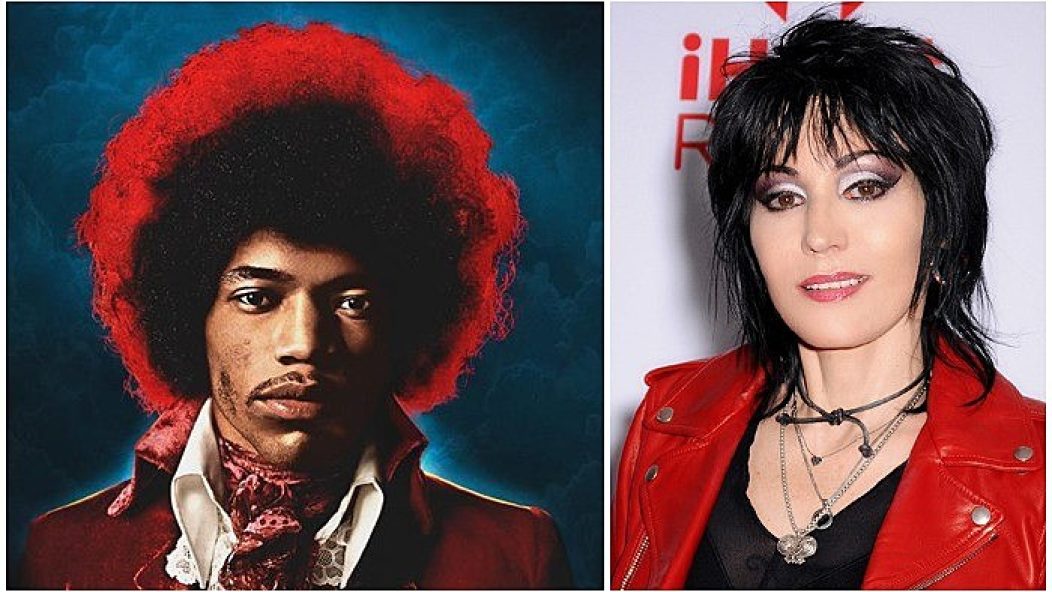
11 re-imagined cover songs that became popular
One of the best things about music is when artists put their own unique spin on iconic songs. Sometimes they change the song’s original genre, swap in new lyrics or reimagine its intent. Modern artists will always cover classic songs, such as twenty one pilots undertaking “Can’t Help Falling In Love” by Elvis Presley or Miley Cyrus performing “Black Dog” by Led Zeppelin. But did you know that some of your favorite, and arguably timeless, tracks are actually covers themselves?
Here are 11 artists whose reimagined covers ended up becoming popular tracks.
Read more: AltPress Weekly: Chase Atlantic, Pom Pom Squad, Real Friends and more
Mark Ronson – “Valerie” (feat. Amy Winehouse)
Before the Mark Ronson and Amy Winehouse version of this song climbed to No. 2 on the U.K. Singles Chart, the original “Valerie” appeared on English indie-rock band the Zutons’ 2006 sophomore album, Tired Of Hanging Around. For the cover, Winehouse joined forces with Ronson for a faster, more soulful take compared to the lighthearted indie-rock version.
Florence + The Machine – “You’ve Got The Love”
“You Got The Love” was released in 1986 by the Source featuring Candi Staton. While it has been remixed and covered multiple times, none is more well known than Florence + The Machine’s rendition. Staying in line with Florence Welch’s tradition of recording covers of many different songs, this version had its name changed to “You’ve Got The Love.” While the Florence + The Machine cover does sound similar to the original, what makes it stand out is Welch’s signature vocals.
Blondie – “The Tide Is High”
Originally released in 1967 by Jamaican trio the Paragons, “The Tide Is High” earned international success when Blondie‘s cover shot to No. 1 on the U.S. and U.K. charts. The Paragons’ recording mainly utilizes a Jamaican rocksteady and reggae sound. Blondie’s interpretation, which was released over a decade later, saw the band step away from their punk-rock roots to introduce similar reggae and rap influences to listeners.
Aretha Franklin – “Respect”
Aretha Franklin’s iconic cover of “Respect” not only won two Grammys but has been heralded as an anthem for female empowerment since its release. However, the original song by Otis Redding was released just two years before Franklin shared her cover. The two versions have notably different sounds as well as underlying meanings. Redding’s original focuses on wanting respect for being a breadwinner, whereas Franklin’s rendition reimagines the lyrics in a powerful feminist way—including changing the lyrics so they came from a woman’s perspective. Despite the success of Franklin’s version and praise for her bold stance on feminism, she once said, “I don’t think it’s bold at all. I think it’s quite natural that we all want respect—and should get it.”
Joan Jett & The Blackhearts – “I Love Rock ‘N Roll”
While Joan Jett & The Blackhearts’ 1981 single “I Love Rock ‘N Roll” became Joan Jett’s highest-charting song ever—hitting No. 1 on Billboard’s Hot 100 chart—it was actually a cover of a song released six years prior. The original was recorded by the Arrows in 1975 and was initially made as a response to the Rolling Stones song “It’s Only Rock’n’Roll (But I Like It).” Jett first covered the song in 1979 with Steve Jones and Paul Cook of the Sex Pistols, which was released as a B-side to “You Don’t Own Me.” Later, she recorded another version with the Blackhearts, which is the song we all know and love today.
Cyndi Lauper – “Girls Just Want To Have Fun”
“Girls Just Want To Have Fun,” which has come to be known as a feminist anthem, thanks to Cyndi Lauper, is in fact a cover of a demo recorded by Robert Hazard. Lauper took the rock song that centered around a man’s view of women and made it her own, creating one of the most fun female empowerment pop songs ever.
The Jimi Hendrix Experience – “All Along The Watchtower”
Out of various covers of Bob Dylan’s “All Along The Watchtower,” Jimi Hendrix’s version stands out from the rest. Even Dylan himself agreed, one time saying, “I liked Jimi Hendrix’s record of this, and ever since he died, I’ve been doing it that way. Strange how when I sing it, I always feel it’s a tribute to him in some kind of way.” While the original song from Dylan is very much a folk-rock song, Hendrix’s signature guitar playing makes his interpretation entirely inspired.
Patti Smith – “Gloria”
“Gloria” was originally written by Van Morrison and recorded with his band Them. The then-garage-rock song saw a complete reworking in 1975 by Patti Smith. Now transformed into a harder, punk-influenced track, Smith changed many of the lyrics to give it a poetic meaning. It was an unforgettable moment in the punk-rock movement that she was so influential in shaping.
The Clash – “I Fought The Law”
Originally written by Sonny Curtis and recorded by the Crickets, “I Fought The Law” was first popularized by the Bobby Fuller Four in the ’60s. It was this cover that the Clash heard and decided to take on themselves. Their punk-rock version is arguably the most popular interpretation of the song, and its success introduced the Clash to U.S. listeners via the radio.
Janis Joplin – “Me And Bobby McGee”
“Me And Bobby McGee” was written by Kris Kristofferson and initially performed by Roger Miller but has been reworked by many artists over the years. Willie Nelson, the Grateful Dead, Jerry Lee Lewis, Dolly Parton and Johnny Cash are just some of the names that have covered the track. However, it was a powerful posthumously released interpretation by Janis Joplin that topped charts around the world, reaching No. 1 on Billboard’s Hot 100.
Natalie Imbruglia – “Torn”
“Torn” was originally performed by Ednaswap, but Natalie Imbruglia‘s version is the most well known. Working with the same producer as the original track, Imbruglia took a smoother, acoustic-leaning sound for her version. The song charted in countries all over Europe as well as the U.S. In Australia, it was also declared the most played song on Australian radio, played an average of 75 times a day.








